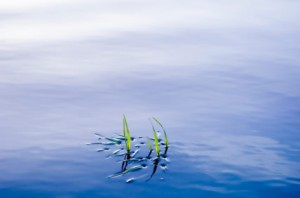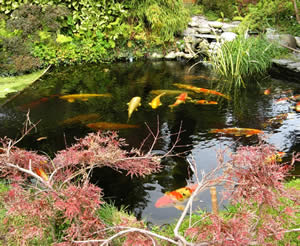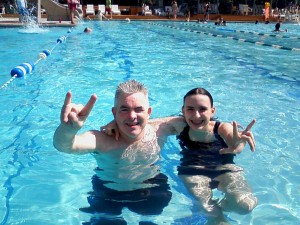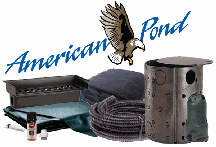
Title Section

We recently returned from a week’s vacation to find all seven of our big koi dead, victims of a fast-growing algae bloom. The loss was troubling–some of these fish had lived in our pond for as long as eight years, and we thought of them as pets. I was determined not to lose any more koi, so I did some investigating… and I learned that algae are often to blame.
Algae steal the nutrients and oxygen that fish and plants would otherwise consume.
And when the weather is warm, the problem gets worse.
Here are some effective ways to control algae:
Provide shade around the water garden and limit fish populations to numbers that the pond can actually manage.
In the spring, give the pond a fresh start by removing fall and winter debris.
Test your water quality regularly. Check for nitrites to ensure that fish waste is not building up to toxic levels. If it is, relocate some fish, cut down on feeding, or clean the pond. Use a water meter or water testing kit to look for dissolved oxygen. Ideally, this should be in the range of three to six milligrams per liter.
If the water garden is low on oxygen, use bubblers, aeration devices, pumps and fountains. A pond pump circulates water around the pond and into pond filters, naturally adding oxygen, as well.
Maintain Your Filter
It’s also crucial to keep your filter clean. It’s not hard to do: Just pull out any clumps of algae and debris, clean out the filter, and keep a good balance of bacteria in the water garden.
Actually, you probably won’t need to clean the filter as often as you’d think. Like win, pond filters get better with age because the bacteria are more efficient over time. But in summer and fall, when the filter becomes clogged, it’s time for a cleaning.
Remove the filter media and clean out the media and the filter. Use pond water, if possible, to keep the chemical composition stable. Clean until the water runs clear. Then inspect the filter, and change the parts, if the media are visibly damaged or misshapen.
Where water enters and exits the filter, debris can clog the holes. Move water through the inlets and outlets of the filter to make sure that they’re clear. Use a gentle brush or a more powerful spray of water.
Water gardens have a host of microorganisms that you won’t see; and because many of these bacteria are beneficial to pond life, you’ll want to keep them around. Don’t use chlorine of bleach in the water. When you change the filter media, be sure to add more of the “good” bacteria.
After cleaning the filter, make sure that it works as well as it did before. If it’s a gravity feed filter, check to see that the pipe is angled so that pond water goes into the filter. After changing the filter, use a test kit to check the water quality for a few days.
These steps will ensure your water garden stays clean. And your fish will thank you.







